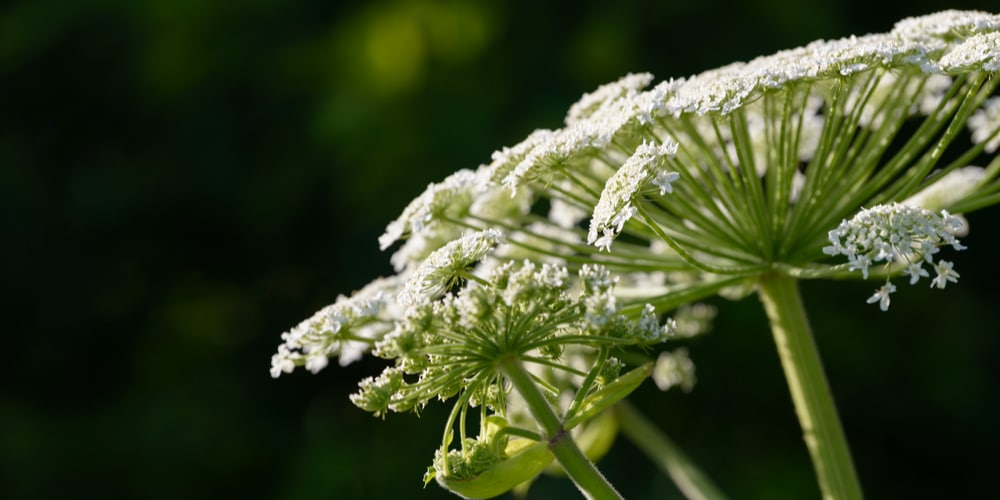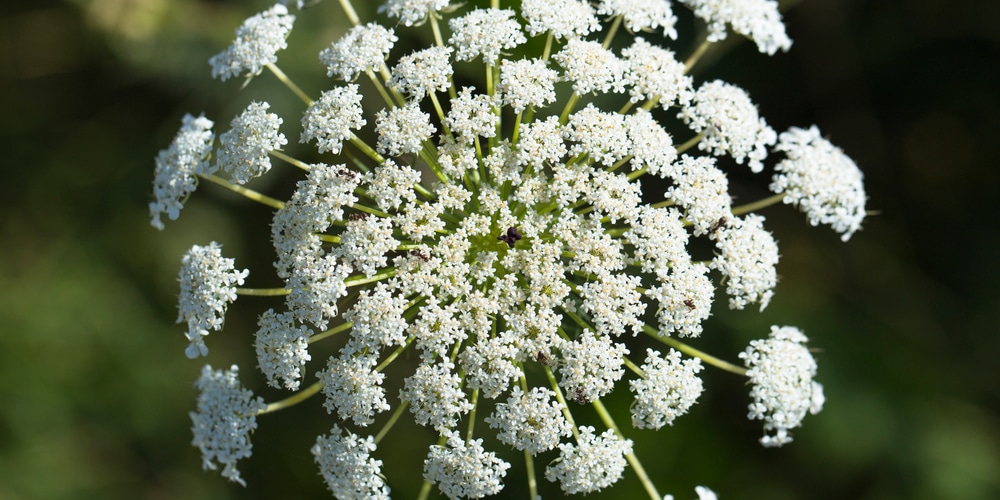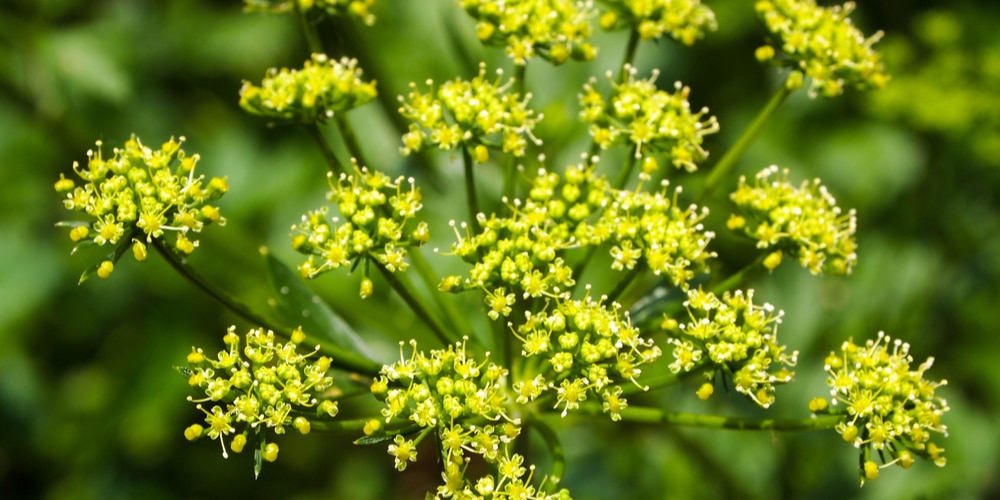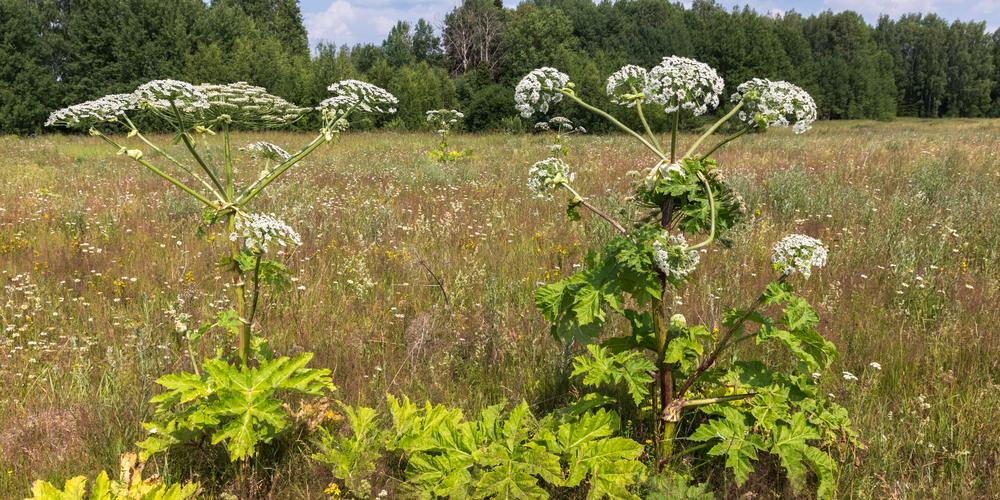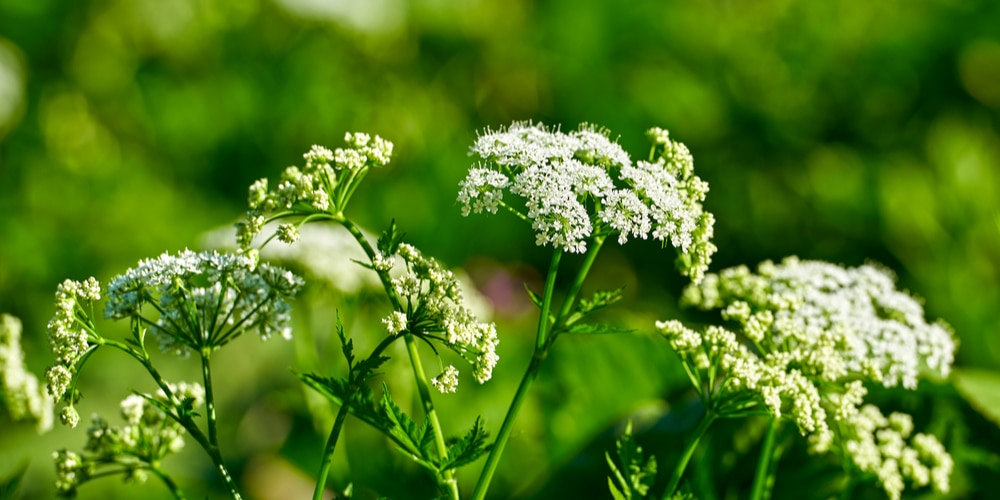Hogweed, also known as Giant Hogweed, is a perennial plant. It grows and blooms each year. It is related to carrots and can grow much taller than a human, more than three meters. Hogweed is an herb, but it is toxic to humans and animals. If you touch it, the sap could cause lesions or welts. In some cases, even permanent scars. Hogweed is a highly invasive plant that originated in the Caucasus Mountains. Let’s look at some Hogweed lookalikes.
Hogweed Lookalikes
Hogweed stems are two to four inches in diameter, and the plant can grow around 14 feet tall. It has white flowers blooming in a roundish cluster, and its leaves are wide with many points. Its stems can have purple coloration mixed in with bright green. Several other plants resemble Hogweed. But you can differentiate them by spotting small differences.
Queen Anne’s Lace
Queen Anne’s Lace does not present any health risks. These plants bloom in the summer months (Hogweed blooms in spring). They only grow a few feet high, so these plants are much closer to the ground than Giant Hogweed.
Although Queen Anne’s Lace is in the carrot family, its leaves are feather-like and elongated in appearance as opposed to Hogweed’s serrated, wide, fan-like leaves. The stems have no purple coloration
Elderberry
The leaves of an Elderberry plant look different from Hogweed leaves. They do have serrated edges, but they are almond-shaped with pointed ends. The stems of Elderberry are much thinner than Hogweed, and they branch out opposite on either side of the main stem.
Elderberry plants produce toxins in the seeds, stems, leaves, and roots that contain cyanide. You should not consume the plant. However, touching the plant will do you no harm, unlike the burns you can and will receive if you come in contact with Hogweed.
Wild Parsnip
Another member of the carrot family, Wild Parsnip, can also cause contact dermatitis. But it will not be nearly as severe as if you were to touch Hogweed. Although the roots of Wild Parsnip are edible, you should avoid the rest of the plant. It is best to leave this one alone.
You can differentiate this plant from Hogweed because it only grows up to five feet tall at the most, and it produces tiny yellow flowers rather than large clusters of small white ones. Its stems are thin and green, without any other coloration, and they have ridges along their length. Wild Parsnip leaves are small and spread out, rather than the large fan-like, toothy Hogweed leaves.
Angelica
Angelica is a plant that thrives in colder environments, even in the Tundra and Taiga, where not many plants are hardy enough to withstand the freezing temperatures. It grows in northern North America, as far south as Delaware, but mainly in Canada.
It can be mistaken for Hogweed because it can have white flower clusters, but the flower clusters can be light green. This plant is edible, but you must cure it before consuming it. It is mainly medicinal and can help with aches and pains.
Cow Parsnip
Cow Parsnip is arguably the plant most like Hogweed. Both in appearance and toxic effects. It can also cause contact phytophotodermatitis, but perhaps not as severe as that caused by giant Hogweed.
Its leaves are not shiny like Hogweed leaves, and although there can be purple coloration and green on the stems, the stems of Cow Parsnip are completely purple in some areas and fully green in others. There is no blotching, patterning, or mixed colorations, as you will find when observing a Hogweed stem.
Poison Hemlock
Poison Hemlock looks like Hogweed and is yet another member of the carrot family. Its leaves are more elongated and resemble those of a fern, whereas Hogweed leaves are fanned out and have patterned edges. Poison Hemlock matures in two years, making it a biennial. It is extremely toxic to humans and animals.
It only grows half as tall as Hogweed, and blooms later in summer. It does not cause contact dermatitis but is toxic and even deadly if consumed. Its white flower clusters look almost identical to those of Hogweed.
Hogweed Lookalikes: In Conclusion
Knowing the difference between Hogweed lookalikes can aid in avoiding contact with this toxic plant. Plant identification is paramount when dealing with any plants in the wild. Know the key differences to ensure safety in nature.
